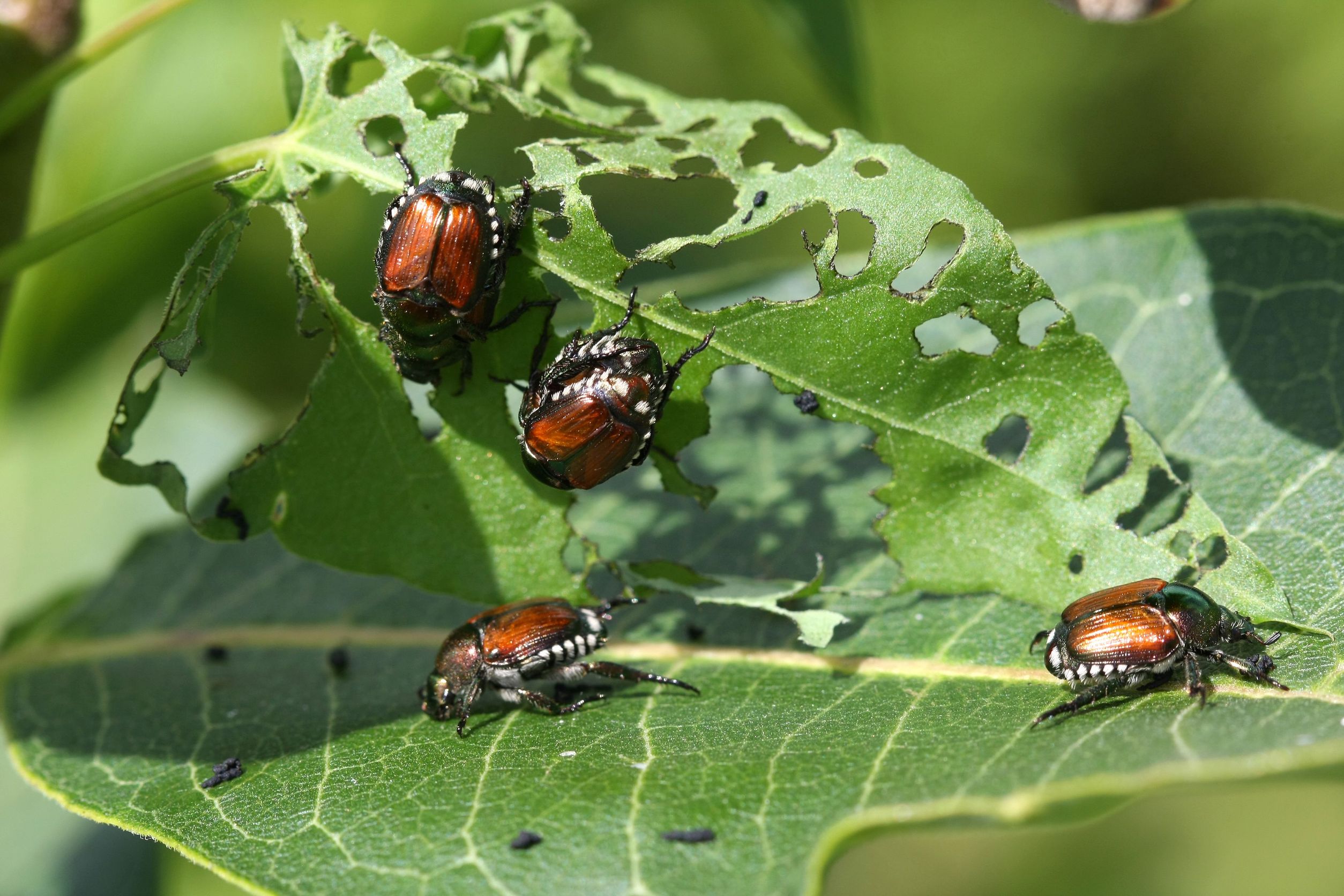
How to Protect Your Plants From Japanese Beetles
Japanese beetle hatching season is coming soon and will be here before we know it. They typically start hatching around July 4th. They cause plant damage to forests, farms, flowers, ornamental trees, and shrubs. Keep reading to see our recommendations for this season.
History
The Japanese Beetle was first identified in the early 1900’s after being accidentally introduced to the United States from imported Iris plants from Japan. It quickly became one of the most common pests in New England due to its lack of natural predators and now can be found in almost every state east of the Mississippi River. The immature grubs live in the soil causing brown patches and the adults emerge in the summer and can cause severe defoliation. The beetle has an iridescent copper and green color and measures about 1.5 inches long.
Symptoms
Japanese beetles show unique damage because they do not eat the veins of the leaves. This is referred to as “skeletonizing” because it gives the appearance of a leaf skeleton. This damage can eventually kill a plant but usually just compromises leaf and fruit production and drastically affects the ornamental aesthetics.
How to Treat Japanese Beetles
The timing of treatments is crucial to be effective. Treating early in the season to target the grubs is especially important to prevent them from maturing into adults. Treatments can be made in May – June, or when the soil temperature rises above 50F, when the grubs start feeding. By mid-June, most grubs matured to the pupal stage and treatments are less effective.
AzaSol has antifeedant properties against Japanese beetle, and they tend to avoid the foliage because of the residue. Use as either a spray, drench or tree injection. Because this pest is so difficult to control, AzaSol treatments must be applied every 10-14 days throughout the adult feeding season if sprayed or drenched, and once every thirty days by injection. AzaSol is an organic, non-oil based water soluble powder bio-insecticide, derived from the plant Neem.
If you have any additional questions, be sure to contact us!
Make sure to connect with us on Facebook, Twitter, and Instagram!


Sorry, the comment form is closed at this time.